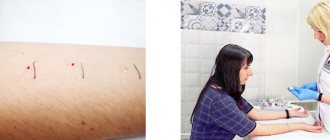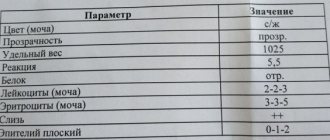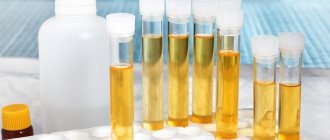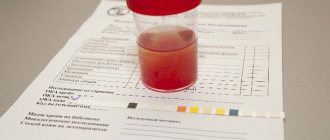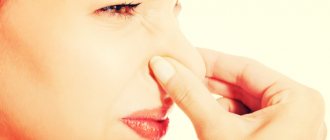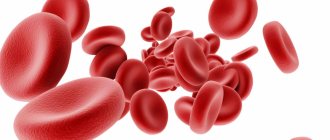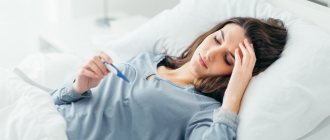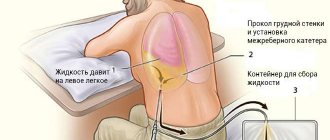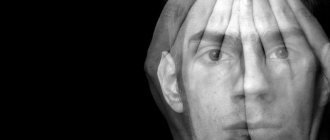Remember that the reliability of the results obtained depends on compliance with these recommendations!
General recommendations:
- The following tests are taken strictly on an empty stomach (at least 12 hours after the last meal): - general clinical blood test; determination of blood group and Rh factor; - biochemical tests (glucose, cholesterol, triglycerides, ALT, AST, etc.); — study of the hemostasis system (APTT, prothrombin, fibrinogen, etc.); - hormones; - tumor markers.
- Taking water does not affect blood counts, so you can drink water.
- Blood counts can change significantly throughout the day, so we recommend taking all tests in the morning. All laboratory norms are calculated for morning indicators.
- One day before donating blood, it is advisable to avoid physical activity, drinking alcohol and significant changes in diet and daily routine.
- Two hours before donating blood for testing, you must refrain from smoking.
- For laboratory tests of hormones (FSH, LH, prolactin, estriol, estradiol, progesterone), blood should be donated only on the day of the menstrual cycle that was prescribed by the doctor.
- All blood tests are done before radiography, ultrasound and physiotherapeutic procedures.
Preparing for tests
| Methodology | Preparation |
|
|
|
|
|
|
|
|
|
|
|
|
|
|
|
|
|
|
|
|
|
|
|
|
|
|
|
|
|
|
|
|
|
|
|
|
|
|
|
|
Daily urine for:
|
|
Analyzes during the day
Regardless of meal | After 3-4 hours of fasting |
|
|
| Type of study: | Factors distorting research results: | ||||
| At least 12 hours fasting | Possible without fasting | Physical load - overestimates the indicator | Fear when taking tests increases index | Take analysis strictly from 7 to 10 am | |
| Biochemical studies: | |||||
| Glucose | + | + | + | ||
| Glucose tolerant test (1) | + | + | |||
| Bilirubin (2) | + | ||||
| Creatinine | + | ||||
| Iron | + | ||||
| Uric acid (3) | + | ||||
| Hormones: | |||||
| adrenalin | + | + | |||
| ACTH | + | + | |||
| glucagon | + | ||||
| cortisol | + | + | |||
| norepinephrine | + | + | |||
| parathyroid hormone | + | + | |||
| prolactin | + | + | |||
| STH (somatotropic hormone | + | ||||
| TSH (thyroid stimulating hormone) | + | + | + | ||
| Insulin | The indicator is decreasing | ||||
| Blood tests for infections: | |||||
| Syphilis | + | ||||
| Antigen hepatitis B | + | ||||
| Antibodies to viral hepatitis | + | ||||
| Antibodies to rubella, cytomegalovirus | + | ||||
| HIV | + | ||||
Factor No. 5. It's in vitro...
For blood collection, it is better to use vacuum tubes of a standardized volume, since this will avoid damage to the formed elements, especially red blood cells. In practice, when a laboratory switches from one type of tube to another, the CBC results may be distorted, which does not depend on the patient’s underlying disease.
How it affects: It is possible to change the hemoglobin amount indicator (both towards overestimation and towards underestimation), as well as the associated calculated indices (MCH, MCHC).
Three reasons for patient-related variability in CBC results:
- Biological variation: interindividual (race, gender, age) and intraindividual (biorhythms, pregnancy, diet, physical activity, alcohol consumption, smoking);
- External conditions (climate, atmospheric pressure, stress, drugs, medications);
- A change in body position (transition from a lying position to a sitting or standing position) leads to hydrostatic penetration of water and filtered substances from the intravascular space into the interstitial space. It is possible to increase the concentration of hemoglobin, hematocrit, and the number of leukocytes.
Urine tests:
General urine analysis
- On the eve of the test, it is recommended not to eat vegetables and fruits that can change the color of urine (beets, carrots, etc.), and not to take diuretics.
- Before collecting urine, it is necessary to perform a thorough hygienic toilet of the genitals.
- Women are not recommended to take a urine test during menstruation.
Collect your morning urine in a container. To properly conduct the study, during the first morning urination, release a small amount of urine (the first 1 - 2 seconds) into the toilet, and then, without interrupting urination, place a urine collection container into which to collect approximately 50-100 ml of urine. Close the container tightly with the screw cap.
A specialized plastic container is the optimal means of collecting and transporting urine for laboratory research. Ask at pharmacies. The container is a wide-neck graduated translucent glass with a capacity of 125 ml with a hermetically screw-on lid. The container is sterile, does not require pre-treatment and is completely ready for use.
Nechiporenko test
To analyze urine using the Nechiporenko method, the morning portion is collected in the middle of urination (“middle portion”). 15-25 ml is enough.
24-hour urine collection
For laboratory studies, in the morning before collecting urine, it is necessary to toilet the external genitalia.
The first morning urine sample is not collected, but the time of urination is noted. Subsequently, all urine excreted in 24 hours from the marked time of the first urination to the same hour the next day is collected.
The collection of daily urine is optimally carried out in a specialized graduated plastic container of 2.7 liters, which has a wide neck and a textured handle. The container is safe and easy to handle.
You should urinate directly into the container and screw the lid tightly after each urination. Urine should be stored in a closed container in the refrigerator on the bottom shelf, avoiding freezing.
At the end of the collection (the last urination is performed at the same time, which is marked as the time of the first urination, but one day later), the urine can be submitted to the laboratory: the daily volume of urine in a closed container is shaken, after which it is poured into a small container for clinical urine analysis of 125 ml 100 ml portion. You don't need to bring all your urine. At the medical center, report the daily amount of urine.
Collection of daily urine according to Zimnitsky
Urine is collected per day (8 servings in 8 containers, every 3 hours). The first portion of urine in the morning is removed. All subsequent portions of urine excreted during the day, night and the morning portion of the next day are collected in different containers (50 ml) purchased at the pharmacy, each with the time of collection signed.
After collecting urine, accurately measure the contents of the container, be sure to mix it and immediately pour it into a container purchased at the pharmacy. Bring the container to the medical center for examination. You don't need to bring all your urine. At the medical center, report the daily amount of urine.
Urine for sugar
From the daily amount of urine, 50-100 ml of urine or 3 portions of urine collected per day with intervals of 8 hours are delivered to the laboratory:
1 serving - from 8 to 16 hours
2 servings - from 16 to 24 hours
3 servings - from 24 to 8 am (as directed by a doctor).
Urine for PCR studies (tuberculosis, CMV, STIs)
Before collecting urine, it is necessary to toilet the external genitalia. Urine is collected in the morning on an empty stomach after sleep or no earlier than 2-3 hours after the last urination into a sterile plastic container. The minimum volume of urine required for analysis is 20 ml.
Urine for bacteriological research
The urine sample is collected only in a sterile container.
Urine must be collected before starting antibacterial treatment or 3 days after therapy. If the patient is taking antibacterial drugs, then it is necessary to decide on their temporary withdrawal.
After thoroughly toileting the external genitalia, flush the first portion of urine into the toilet, collect the middle portion of 3-5 ml in a sterile hermetically sealed container. Deliver the urine to the laboratory within 1-2 hours; if this is not possible, then the urine sample can be stored in the refrigerator for no more than a day. When transporting the sample, care must be taken to ensure that the stopper does not get wet.
Stool tests:
- Stool examinations should not be carried out earlier than 2 days after an enema, an X-ray examination of the stomach and intestines, or a colonoscopy.
- You cannot take medications the day before, including: - laxatives; - Activated carbon; - preparations of iron, copper, bismuth; - use fat-based rectal suppositories.
- Do not allow urine or water into the sample.
- Conduct stool examinations in women during menstruation
Stool should be collected for examination in the morning. If this is difficult, you can prepare the sample in advance, but no more than 8 hours before submitting the stool to the laboratory. In this case, the sample should be stored in the refrigerator (do not freeze).
Thorough toileting of the external genitalia and anal area. Pre-urinate. Defecate in a dry, clean container: a vessel or a night vase. Transfer a stool sample of 3-5 cubic meters. cm in a pre-prepared, clean, dry container for storage and transportation.
Feces for occult blood
The patient should not eat meat, fish, or tomatoes 3-5 days before the test (they can be replaced with dairy and cereal dishes). The patient should not brush his teeth. The material is collected on the fourth day in a clean, dry container for storage and transportation.
Factor #10: Time
The general rule for transporting any biological material is delivery to the laboratory as soon as possible.
How it affects: In addition to changing the morphology of cells, the delivery time can change quantitative indicators, especially if the temperature regime has been violated: an increase in blood viscosity when it is cooled during storage or transportation, the presence of microclots due to poor mixing with the anticoagulant immediately after blood collection. The most sensitive indicator is red blood cells: their number will be falsely underestimated.
Bacteriological studies:
Discharge from the eyes
The material is taken from the affected areas at the height of the inflammatory process in compliance with the rules of asepsis. At least 5-6 hours before the study, all medications and procedures are canceled. The doctor takes the material with a separate swab for each eye.
Conjunctiva
If there is abundant purulent discharge, use a sterile dry cotton swab to take pus from the inner surface of the lower eyelid moving towards the inner corner of the palpebral fissure. It is necessary to ensure that the eyelashes do not touch the tampon (hold the eyelids with your hands).
Edge of the eyelids
Crusts of pus are removed with tweezers. The material is taken from the sore at the base of the eyelashes.
Cornea
The material for research is taken after anesthesia with a sterile dry cotton swab.
Nasal discharge
The material from the nasal cavity is taken with a dry sterile cotton swab, which is inserted deep into the nasal cavity. A separate swab is used for each nasal passage.
Nasopharyngeal discharge
Material from the nasopharynx is taken with a sterile posterior pharyngeal cotton swab, which is inserted through the nasal opening into the nasopharynx. If a cough begins, the tampon is not removed until it is over. To test for diphtheria, films and mucus from the nose and throat are examined simultaneously.
Oral material
Material from the oral cavity is taken on an empty stomach or 2 hours after a meal with a sterile cotton swab from the mucous membrane or its affected areas at the exits of the ducts of the salivary glands, the surface of the tongue, and from ulcers. If there is a film, remove it with sterile tweezers.
Ear material
The doctor takes the material for inflammation of the middle ear. The skin of adjacent areas is treated with an antiseptic solution.
Factor No. 2. Tourniquet/not tourniquet
When collecting blood from the cubital vein, you do not need to squeeze your hand. The hand should be relaxed. When using a tourniquet, the optimal application time is no more than 2 minutes.
How it affects: A tourniquet applied for 4 minutes will increase the hemoglobin level by an average of 4 g/l, and for 6 minutes - by another 4 g/l. These differences can be very significant for people with anemia.
A widespread mistake in the preanalytical stage is “mixed-up tests.” Therefore, the basic rule of the nurse is to identify the patient before each blood draw!
PCR studies:
General recommendations for collecting biomaterial for PCR research
1. Various microorganisms have their own characteristics of localization, routes of distribution and excretion, which should be taken into account when choosing the place for taking biomaterial.
2. The collection of biomaterial, if possible, should be carried out during an exacerbation of infection. A few days before the study, you must stop taking chemotherapy. Monitoring the effectiveness of treatment should be carried out no earlier than 3-4 weeks after the end of therapy.
3. The volume of the selected biomaterial should not be excessive, since substances that can cause PCR inhibition or contribute to DNA degradation during storage and transportation get into the sample along with the pathogen. When taking smears and scrapings, it is enough to obtain material in the volume of a “match head”.
4. To take samples, you must use only disposable instruments and sterile plastic containers (or tubes with transport medium) with a tight-fitting lid.
Recommendations for women on preparing for a smear test for PCR, RIF, culture for flora, mycoplasma, trichomonas, fungal infection.
- Such studies cannot be carried out while taking any antibacterial drugs.
- These studies are not carried out during menstruation and for 1-2 days after its end.
- 2-3 days before your visit to the clinic, you should stop using any vaginal tablets, balls, suppositories - both medicinal and contraceptive (Pharmatex, Pantex-Oval, Klion D, Polygynax and others).
- The night before and in the morning on the day of taking a smear, you should not wash yourself or douche.
- IMPORTANT! You cannot take smears for PCR after colposcopic tests.
Urethral material
Before taking the material, the patient is advised to refrain from urinating for 1.5-2 hours. Immediately before taking the material, the external opening of the urethra must be treated with a swab moistened with sterile saline. In the presence of purulent discharge, it is recommended to take a scraping after 15-20 minutes. after urination, if there is no discharge, it is necessary to massage the urethra using a probe to collect material. In women, before inserting a probe into the urethra, it is massaged on the pubic joint. In women, the probe is inserted into the urethra to a depth of 1.0-1.5 cm, in men - to 3-4 cm, and then several careful rotational movements are made. In children, material for research is taken only from the external opening of the urethra. After taking the material, the probe is transferred to the probe packaging, or placed in a test tube with a transport medium and thoroughly washed, the test tube is closed and labeled, after which the material is delivered to the laboratory.
Material from the cervical canal
Before taking the material, it is necessary to remove the mucus with a cotton swab and then treat the cervix with sterile saline solution. The probe is inserted into the cervical canal to a depth of 0.5-1.5 cm, the material is collected with careful rotational movements. If there are erosions of the cervical canal, they must be treated with sterile saline; the material should be taken at the border of healthy and altered tissue. When removing the probe, it is necessary to completely avoid its contact with the walls of the vagina. After taking the material, the probe is transferred to the probe packaging, or placed in a test tube with a transport medium and thoroughly washed, the test tube is closed and labeled, after which the material is delivered to the laboratory.
Vaginal material
The material must be taken before performing a manual examination. Before manipulation, the mirror can be moistened with hot water; the use of antiseptics for treating the mirror is contraindicated. If there is excess mucus or excessive discharge, remove it with a sterile cotton swab. Vaginal discharge is collected with a sterile disposable probe from the posterior inferior fornix or from pathologically altered areas of the mucosa. In girls, the material must be taken from the mucous membrane of the vaginal vestibule, in some cases - from the posterior vaginal fornix through the hymenal rings. After taking the material, the probe is transferred to the probe packaging, or placed in a test tube with a transport medium and thoroughly washed, the test tube is closed and labeled, after which the material is delivered to the laboratory.
Prostate secretion
Before taking prostate secretions, the head of the penis is treated with a sterile cotton swab moistened with saline solution. After preliminary massage of the prostate through the rectum, the doctor performs a pressure massage with several vigorous movements from the base to the tip of the penis. Then 0.5-1 ml of prostatic secretion is squeezed out from the cavernous part, which is collected in a dry sterile container. The material must be delivered to the laboratory within 1-3 hours; transportation must be carried out only in a cooler bag.
Material from the conjunctiva of the eyes
If there is abundant purulent discharge, it is removed with a sterile cotton swab moistened with saline solution. A scraping is taken from the inner surface of the lower eyelid moving towards the inner corner of the palpebral fissure. When taking a scraping, you must hold the eyelid with your hands so that when you blink, the eyelashes do not touch the probe. After taking the material, the probe is transferred to the probe packaging, or the probe is placed in a test tube with a transport medium and washed thoroughly, the test tube is closed, labeled and delivered to the laboratory.
Material from the back of the throat
The material is taken on an empty stomach or no earlier than 2-4 hours after a meal. A disposable probe is inserted behind the soft palate into the nasopharynx and passed along the back wall of the pharynx. If the purpose of the study is the tonsils, the probe is inserted into the lacunae of the tonsils and rotated there. After taking the material, the probe is transferred to the probe packaging, or placed in a test tube with transport medium and washed thoroughly. The tube is capped, labeled and delivered to the laboratory.
Material from the nasopharynx
The material is taken on an empty stomach or no earlier than 2-4 hours after a meal. When taking material, good lighting is necessary, the patient sits against the light source, the root of the tongue is pressed with a spatula, the material is taken with a sterile probe, without touching the tongue, mucous membranes of the cheeks and teeth. After taking the material, the probe is transferred to the probe packaging, or placed in a test tube with a transport medium and washed thoroughly, the test tube is closed, labeled and delivered to the laboratory.
Material from periodontal pockets
Smears from the periodontal pocket are collected in a sterile test tube (Eppendorf type) with saline solution. In this case, the test tubes can be stored in the refrigerator (+4... 6°C) for no more than 12 hours, and they are transported in a cooler bag. You can also take smears with rigid urethral probes. In this case, after taking the material, the probe is placed in its disposable packaging, and in this form it is delivered to the laboratory.
Saliva
12 hours before taking (collecting) saliva, the intake of food, alcohol and medications is excluded. Immediately before collecting saliva, it is necessary to avoid the use of toothpaste and remove dentures. Before collecting saliva, you need to brush your teeth without toothpaste, then rinse your mouth well without using irritants. Saliva is spat out or sucked out from the bottom of the mouth with a disposable syringe and transferred to a test tube (Eppendorf type). Saliva can be stored in the refrigerator (+4...6°C) for no more than 12 hours; transportation is carried out without refrigeration.
Rectal smears for the intestinal group
A sterile disposable probe is inserted into the rectum, the material is collected with rotational movements, the probe is removed and placed in a sterile tube, which is delivered to the laboratory.
Sputum
After thorough oral hygiene (brushing teeth and rinsing with boiled water), the morning portion of sputum is collected in a sterile container. Sputum of a mucous or mucopurulent nature, as well as sputum containing dense whitish inclusions, and sputum colored yellowish, gray or brown, are of diagnostic value. The volume of sputum sufficient for examination is 3-5 ml. To increase the information content, it is possible to repeat (up to 3 times) sputum examination, which increases the number of positive findings.
If sputum is produced irregularly or in scanty quantities, expectorants or irritant inhalations should be used the night before and early in the morning on the day of sputum collection. Preparation of smears from material obtained in this way must be done on the day of collection. In the absence of sputum, the impossibility of aerosol inhalation or its failure to test for mycobacteria, bronchial or gastric lavage water should be examined.
Gastric lavage water
They are studied mainly in young children who cough up sputum poorly and often swallow it. To avoid mixing of swallowed sputum with food, gastric lavage should be taken on an empty stomach. The last meal should be at least 12 hours before taking gastric lavage. Before taking the material to neutralize the stomach contents, the patient drinks 100-150 ml of a solution of baking soda (1 teaspoon per 1 glass of water) in sterile distilled water, after which a sterile gastric tube is inserted into the stomach and the stomach contents are collected in a sterile bottle. The material is immediately delivered to the laboratory and processed, which eliminates the possible destructive effect of gastric enzymes on the pathogen.


